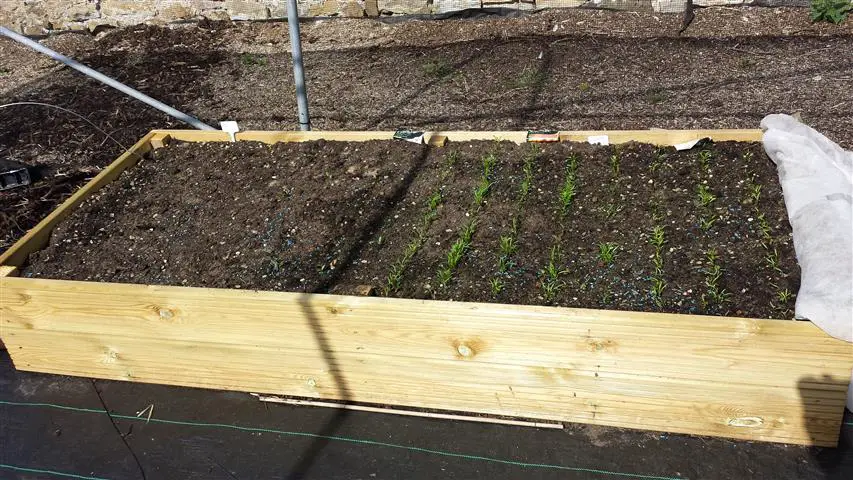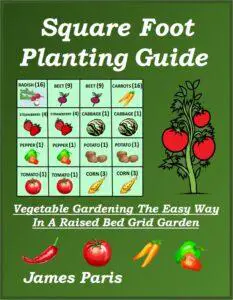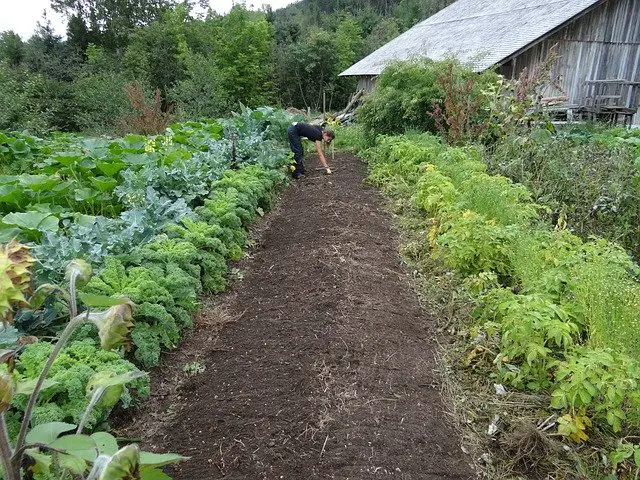Considering at the Pros and Cons of No-Dig
It may seem a little strange. Weird even, that as a firm advocate of no-dig vegetable gardening. I should list the disadvantages of no dig gardening! But since I believe that nothing in this life is perfect. Then it would seem logical to assume that there are some disadvantages, con’s as well as pro’s. When it comes to this vegetable gardening method.
Growing vegetables is always a challenge. Whether it be the weather or the soil or other constraints. These can line up against you to try and thwart your efforts to grow your own food – this is all part of the fun!
So considering all the many advantages of using no-dig methods such as ease of use. Better productivity. Savings on garden tools, to name a few – how can it be disadvantageous to use this method?
As a firm proponent of the many no dig techniques I promote with this blog. It pains me to have to say this – but there are a few negatives depending on which technique or method you choose.

The Negative Side of No Dig Gardening – by method
- Straw Bale Gardens. They need a lot of preparation time. High concentrate fertilizer
 to begin the decomposition process. And can be prone to dry out quick. If using Hay bales instead of straw, they can be prone to growing a nice crop of grasses!
to begin the decomposition process. And can be prone to dry out quick. If using Hay bales instead of straw, they can be prone to growing a nice crop of grasses! - Square Foot Garden.
 Limited space by definition means limited crop sizes, so not good for large crops of the same veggies. Can be costly with compost and vermiculite
Limited space by definition means limited crop sizes, so not good for large crops of the same veggies. Can be costly with compost and vermiculite especially if using many beds.
especially if using many beds. - Hugelkultur raised Bed. This requires a large amount of fallen timber and organic material. Not always available to the urban gardener. It is also a very labour intensive process to build. A job for the strong healthy individual.
- Raised Bed Gardening: These can be expensive to build – especially deep beds
 . This is also the case with infill material that can amount to over $100 in larger raised bed gardens.
. This is also the case with infill material that can amount to over $100 in larger raised bed gardens. - Container
 gardening. Unless you are using large containers or planters. This method is particularly restrictive with regards to quantity. Also traditional containers such as pots. Can easily become root-bound, resulting in poor quality plants.
gardening. Unless you are using large containers or planters. This method is particularly restrictive with regards to quantity. Also traditional containers such as pots. Can easily become root-bound, resulting in poor quality plants. - Lasagna Gardens: Unless these are set up properly with the correct green to brown ratio. these can be super under-productive. They also take a longer time to be ready for planting. As the material has to break down sufficiently before planting vegetables.
- Keyhole Gardening. To make a proper keyhole garden, you must have a good understanding of the operation of this method. Otherwise it will fail. The structure itself needs some skills to build. And the material cost can be expensive if you do not have free material to hand.
In a ‘nutshell’ the main drawbacks surrounding no dig gardening methods would include. The material cost in the initial set-up, and the fact that most of the techniques are fixed in position. This means that you cannot move them around as you wish, once they are established.
methods would include. The material cost in the initial set-up, and the fact that most of the techniques are fixed in position. This means that you cannot move them around as you wish, once they are established.
Is no dig gardening ineffective?
So does all this mean that no-dig gardening methods are a waste of time? Perish the thought!
The fact remains that every growing method or technique will have its drawbacks – as I said at the opening. The aim of the gardener is to get the method that works best for them, given their own unique set of circumstances.
No dig vegetable gardening covers a whole range of different highly effective methods. That suit many different weather and soil conditions. And indeed physical limitations that an individual may have.
Raised beds for instance are an excellent choice for anyone with back problems. Or perhaps are wheelchair users unable to operate a traditional garden .
.
There are many advantages when using raised bed gardens. As you may see in this post. But, this article is about the con’s and not the pro’s, when using no-dig gardening techniques.
But, this article is about the con’s and not the pro’s, when using no-dig gardening techniques.
Where traditional vegetable garden methods are best
After over 40 years as a vegetable gardener. I have to say that although I far prefer the easy gardening techniques listed above. The traditional ‘row’ style vegetable garden does still have a place in my heart.
For example. If you have a large plot, then the costs involved in building many raised bed structures. Then infilling them could be quite uneconomical to say the least!
structures. Then infilling them could be quite uneconomical to say the least!
Lumber costs and compost (unless you make your own). And other soil amendment materials such as vermiculite or perlite.  Can be quite expensive, especially if you are considering setting up a large area.
Can be quite expensive, especially if you are considering setting up a large area.
The average size plot needed to feed a family of 4 is considered to be around 800 square feet. or 200 square foot per family member.
per family member.
So if you have an area 20 foot by 40 foot. Providing the other conditions match up (such as soil, temp, climate). A traditional ‘row’ garden may suit you best, particularly if you want to grow large amounts of a single crop.
With a traditional veggie garden like this. You will not have all the added cost and time demanded by the no-dig methods described above.
described above.
Yet, on the negative side. You will have the extra costs involved with digging over and maintaining the veggie plot.
This may mean buying of a rotavator (or rotary tiller). And other heavy tools. Things like garden spades , forks, hoes, rakes. Whereas the non-traditional gardening techniques. Well, they need very little in the way of tools or maintenance products.
, forks, hoes, rakes. Whereas the non-traditional gardening techniques. Well, they need very little in the way of tools or maintenance products.
Top 6 Cons of no-dig garden methods.
- Can be expensive to construct especially raised bed type gardens.
- Costly to fill with compost/soil infill.
- No-dig means loose loamy soil which usually has to be made up.
- Fixed structures means that you cannot just move them around.
- Can have problems with slugs especially ‘lasagna’ beds.
- Continuous need for mulch and organic soil amendment materials.
Top 6 Pros of No-Dig
- Easy to maintain and weed with loose soil mix.
- Less need for fertilisers and chemical feeds.
- Less strain on the back and knees as less bending over needed.
- Excellent for soil amendment and soil health.
- Easier to harvest the vegetables from loose soil and veg within easy reach.
- Enhances moisture retention and drainage all at once.
The last word:
The fact is that no-dig vegetable gardening is not for everyone. There cons and pros with all methods. And it is true that it can be costly and time consuming, especially at the initial set-up period.
That said, I have used most of the methods listed above for many years. And have to say that I far prefer the regimented look of a series of Steel Raised Beds.  Than I do an untidy (to me) row type veggie garden.
Than I do an untidy (to me) row type veggie garden.
The choice as always, is yours! Whatever method of vegetable gardening you choose. Hopefully this short article will help you make an informed decision. Even achieve the results you/we all desire. From your very own vegetable garden..



